Elf Decorations: Dive into the enchanting world of miniature magical beings and discover the diverse ways to bring their whimsical charm into your home. From traditional wooden elves to modern resin figurines, the possibilities are endless. This guide explores various elf decoration types, popular themes, creative placement ideas, DIY projects, and the fascinating history behind these beloved festive figures.
Prepare to be inspired by the artistry and creativity surrounding elf decorations, and learn how to craft a truly magical holiday atmosphere.
Types of Elf Decorations
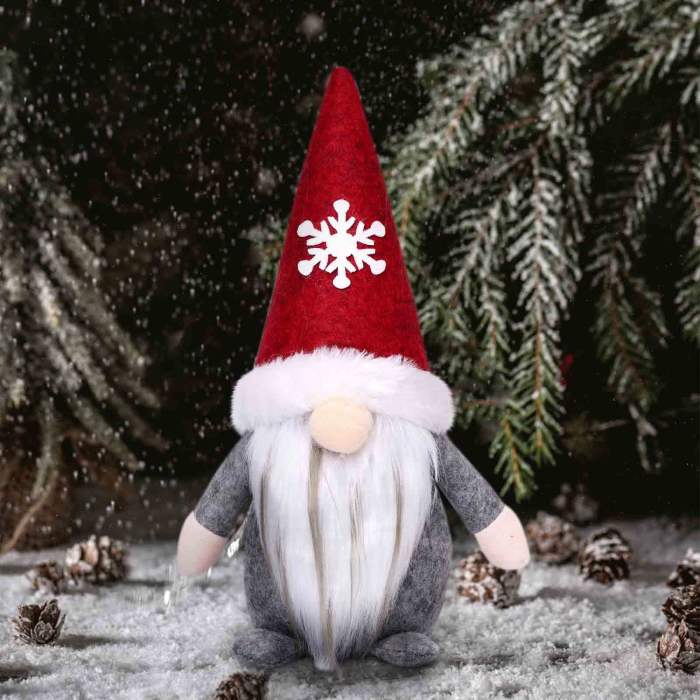
Elf decorations add a whimsical touch to holiday displays, ranging from charmingly rustic to elaborately detailed. The variety of materials used allows for diverse styles and price points, catering to a wide range of tastes and budgets. Understanding the different types of elf decorations and their characteristics helps in choosing the perfect additions for your festive decor.
Elf Decoration Materials and Styles
Elf decorations are crafted from a variety of materials, each lending a unique aesthetic to the final product. The material significantly influences the overall look, durability, and price of the decoration.
Wood: Wooden elf decorations often possess a rustic charm, frequently featuring hand-carved details and a natural, warm tone. They can range from simple, minimalist designs to intricately carved figurines. The natural grain of the wood adds to their unique character, and they often evoke a sense of traditional craftsmanship. These are typically more durable than fabric or resin options.
Examples include carved wooden elf ornaments, shelves shaped like elf houses, and standing elf figurines.
Fabric: Fabric elf decorations offer a softer, more whimsical aesthetic. These can include plush elves, felt ornaments, or fabric banners featuring elf imagery. The variety of fabrics and embellishments allows for a wide range of styles, from cute and cuddly to elegant and sophisticated. However, fabric decorations may require more careful handling and are generally less durable than wooden or resin options.
Examples range from needle-felted elves to simple fabric elf stockings.
Resin: Resin elf decorations often feature highly detailed designs, allowing for intricate sculpting and painting. They can mimic the look of other materials, such as wood or stone, while offering greater durability and resistance to damage. Resin elves often boast vibrant colors and realistic features, creating a polished and detailed aesthetic. However, resin can be more prone to chipping or breaking if dropped.
Examples include intricately detailed resin elf figurines, and miniature elf houses.
Plastic: Plastic elf decorations are typically more affordable and widely available. They come in a variety of styles and colors, ranging from simple to more elaborate designs. While they offer convenience and affordability, plastic decorations often lack the same level of detail and charm as those made from other materials. They are generally lightweight and durable but may appear less sophisticated.
Examples include mass-produced plastic elf ornaments and figurines.
Elf Decoration Types, Materials, Sizes, and Price Ranges
The following table summarizes the different types of elf decorations, along with their typical materials, sizes, and price ranges:
| Decoration Type | Material | Typical Size | Price Range |
|---|---|---|---|
| Elf Figurine | Wood, Resin, Plastic | 2-12 inches | $5 – $100+ |
| Elf Ornament | Wood, Fabric, Resin, Plastic | 2-6 inches | $3 – $50 |
| Elf Village Set | Wood, Resin | Variable, depending on set size | $20 – $200+ |
| Elf Stockings | Fabric | 6-24 inches | $5 – $30 |
Popular Elf Decoration Themes
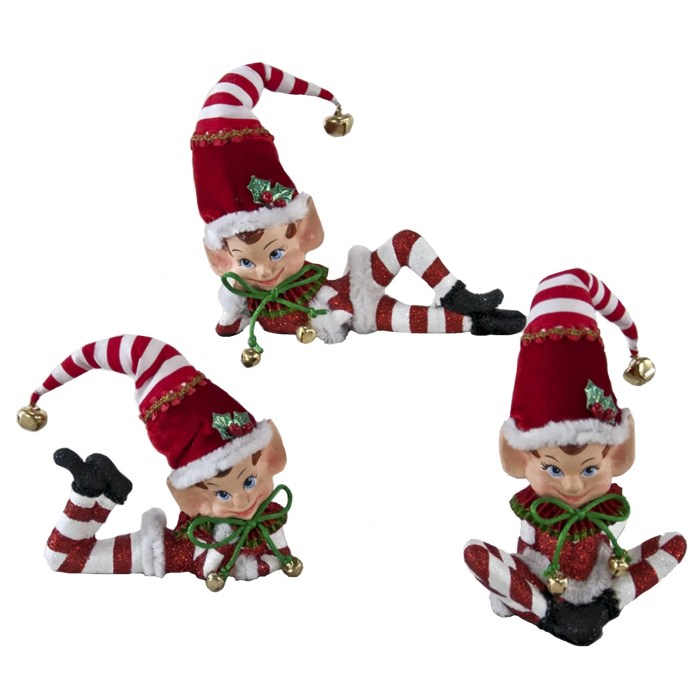
Elf decorations offer a whimsical and festive way to celebrate the holiday season. Beyond simply adorning homes with miniature elves, decorators often gravitate towards specific themes that enhance the overall aesthetic and storytelling aspects of their displays. These themes provide a cohesive narrative and visual appeal, transforming ordinary decorations into captivating scenes. The choice of theme often depends on personal preference, existing décor, and the desired atmosphere.
Traditional Christmas Elf Theme
This classic theme centers around the traditional imagery of elves working in Santa’s workshop. It evokes a sense of warmth, nostalgia, and the magic of Christmas Eve. The color palette typically features deep reds, greens, and golds, reminiscent of classic Christmas colors. Stylistically, the theme leans towards a rustic and slightly whimsical aesthetic, often incorporating elements of wood, burlap, and vintage-inspired touches.
- Key Features: Miniature elves engaged in crafting toys, candy canes, wrapped presents, festive greenery (pine branches, holly), wood accents, vintage-style ornaments, small wooden toy replicas.
Arctic Elf Theme
This theme shifts the focus to elves inhabiting a snowy, icy landscape. The color palette is dominated by cool tones: whites, silvers, blues, and icy greens. Stylistically, it embraces a more sleek and modern aesthetic, with a focus on clean lines and icy textures. This theme is perfect for those seeking a sophisticated and elegant take on elf decorations.
- Key Features: Iridescent ornaments, faux snow, icy blue and white accents, miniature snow-covered houses, elf figurines in winter attire, glitter accents.
Whimsical Woodland Elf Theme
This theme embraces the magical and enchanting aspects of woodland creatures and environments. The color palette is diverse, incorporating earthy tones like browns, greens, and creams, accented with pops of brighter colors like reds and blues. The style is characterized by a playful and whimsical aesthetic, often incorporating natural elements like pinecones, acorns, and faux moss. It evokes a sense of fairytale magic and childlike wonder.
- Key Features: Miniature mushrooms, fairy lights, faux moss and greenery, woodland animal figurines, natural wood accents, fairy-tale style elf figurines.
Santa’s Workshop Elf Theme
This theme focuses on the bustling activity within Santa’s workshop. The color palette often includes bright reds, greens, and yellows, reflecting the energy and excitement of Christmas Eve preparations. Stylistically, it’s characterized by a playful and slightly chaotic arrangement, reflecting the busy atmosphere of a workshop. This theme is perfect for those who want to create a lively and engaging elf display.
- Key Features: Miniature elves engaged in various tasks (wrapping presents, baking cookies), toy-making tools, stacks of presents, busy workshop elements (benches, shelves), brightly colored fabrics and ribbons.
Modern Minimalist Elf Theme
This theme offers a contemporary interpretation of elf decorations, prioritizing clean lines and a streamlined aesthetic. The color palette is typically muted and understated, with neutral tones like whites, grays, and creams accented with subtle pops of color. Stylistically, it emphasizes simplicity and elegance, foregoing overly ornate details in favor of a sophisticated and refined look.
- Key Features: Simple elf figurines, geometric shapes, neutral color palettes, minimalistic accessories, clean lines, focus on high-quality materials.
Elf Decoration Placement and Arrangement
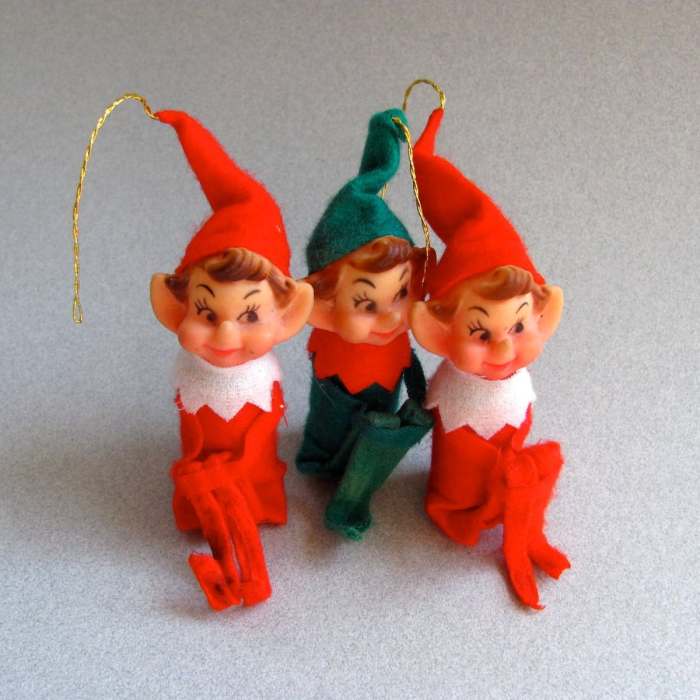
Strategic placement of elf decorations significantly impacts the overall festive ambiance of your home. Consider the size, color, and style of your elf decorations, as well as the existing décor and the space’s natural light when deciding where to position them. Careful arrangement can transform ordinary spaces into whimsical winter wonderlands.Elf decorations, ranging from miniature figurines to larger-than-life cutouts, offer diverse placement opportunities.
Optimizing their placement enhances their visual appeal and contributes to a cohesive holiday theme. The following sections explore effective strategies for different areas of the home.
Elf Decoration Placement in Various Settings, Elf Decorations
Effective elf decoration placement varies depending on the room. Living rooms, often the heart of holiday gatherings, benefit from a balanced arrangement that incorporates both vertical and horizontal space. Mantelpieces, with their inherent visual prominence, offer a perfect stage for a curated display, while Christmas trees provide a dynamic backdrop for playful elf interactions.
Visual Representations of Elf Decoration Arrangements
Consider these illustrative examples of elf decoration arrangements, showcasing diverse techniques and their corresponding advantages and disadvantages.
- Arrangement 1: The “Layered Landscape”. Imagine a miniature village scene nestled beneath the Christmas tree. Small elf figurines engage in various activities—baking cookies, wrapping presents, even ice skating on a small, reflective surface representing a frozen pond. This arrangement utilizes vertical space effectively, creating depth and visual interest. Advantages: Creates a whimsical, story-like atmosphere; utilizes vertical space effectively.
Disadvantages: Requires numerous small decorations; can be challenging to maintain if decorations are easily knocked over.
- Arrangement 2: The “Mantelpiece Merrymaking.” On the mantelpiece, position larger elf figures strategically. Perhaps a mischievous elf peeks from behind a stack of books, while another hangs ornaments on the Christmas tree reflected in a mirror placed behind them. This approach uses the mantelpiece’s horizontal space effectively. Advantages: Draws the eye immediately; suitable for larger elf decorations. Disadvantages: May appear cluttered if too many items are used; requires careful consideration of scale and proportion.
- Arrangement 3: The “Window Wonderland.” Utilize windowsills to create a magical elf scene. Place elf figurines near small, battery-operated tea lights or fairy lights to cast a warm glow. Include miniature snow-covered trees and houses to complete the winter village theme. Advantages: Adds a charming touch from the outside; creates a warm, inviting atmosphere. Disadvantages: Susceptible to damage from extreme weather conditions (if placed near windows that open); requires careful consideration of sunlight and shadows.
DIY Elf Decoration Ideas: Elf Decorations
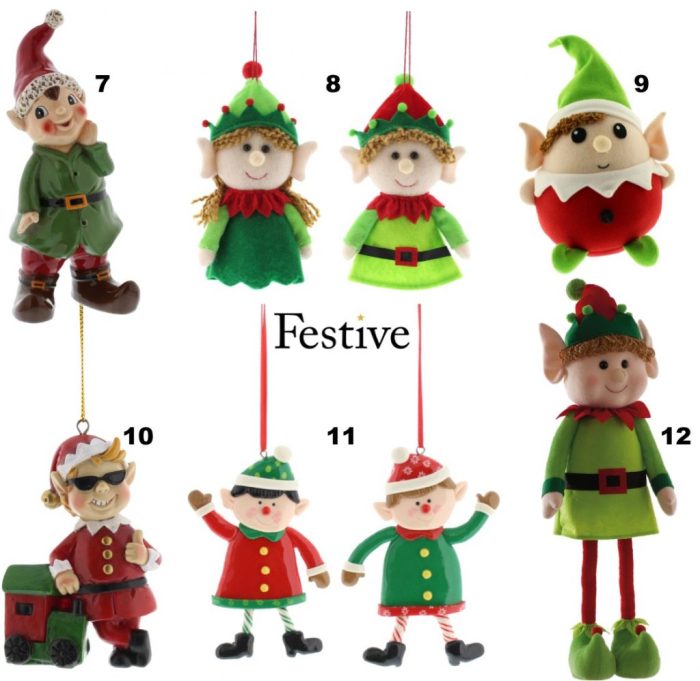
Creating your own elf decorations offers a unique and personalized touch to your holiday display. This approach allows for complete creative control, enabling you to tailor your decorations to your specific style and preferences, and often at a lower cost than purchasing pre-made items. The following projects utilize readily available materials and require minimal crafting skills.
DIY Elf Ornament: Pinecone Elves
This project involves transforming humble pinecones into charming elf ornaments. The natural texture of the pinecone provides a rustic and whimsical base for your elf creation.Materials Needed: Pinecones, felt scraps (various colors), small pom-poms, glue, small twigs or craft sticks, embroidery floss or yarn. Tools: Scissors, hot glue gun (adult supervision required). Time Estimate: Approximately 30 minutes per elf.Steps:
- Gather your materials. Select pinecones of varying sizes for diverse elf characters.
- Cut small felt shapes for elf hats, faces, and clothing. Consider using different colors for variety.
- Use hot glue to attach the felt pieces to the pinecone. The wider end of the pinecone typically forms the elf’s body.
- Glue on small pom-poms for elf noses and use small twigs or craft sticks for arms.
- Add details with embroidery floss or yarn for hair and other embellishments.
DIY Elf Garland: Paper Plate Elves
This project utilizes readily available paper plates to create a festive elf garland. The simple design allows for quick creation of multiple elves, perfect for adorning mantles, doorways, or Christmas trees.Materials Needed: Paper plates, markers, scissors, string or ribbon, glue. Tools: None. Time Estimate: Approximately 15-20 minutes per elf.Steps:
- Fold a paper plate in half and then in half again to create quarters.
- Cut out a semi-circle from one of the folded edges to create the elf hat.
- Cut out the elf’s face and add details with markers or crayons.
- Punch a hole near the top of the elf’s hat and string together multiple elves to create a garland.
3. Unfold the plate and draw elf features
eyes, nose, mouth, and rosy cheeks.
DIY Elf Village: Cardboard Tube Elves
This project repurposes cardboard tubes (toilet paper or paper towel rolls) into a miniature elf village. This is a great project for families and encourages creativity in designing unique elf homes and characters.Materials Needed: Cardboard tubes, paint, construction paper, glue, small embellishments (buttons, beads, etc.). Tools: Scissors, paintbrushes. Time Estimate: Approximately 45 minutes per elf house.Steps:
- Paint the cardboard tubes in various colors to represent elf houses.
- Cut and shape construction paper to create roofs, doors, and windows for the elf houses.
- Glue the paper shapes onto the cardboard tubes.
- Add small embellishments like buttons, beads, or glitter for added detail.
- Arrange the elf houses together to create a miniature village.
| Project | Cost | Difficulty | Time Commitment |
|---|---|---|---|
| Pinecone Elves | Low (uses readily available materials) | Easy | 30 minutes per elf |
| Paper Plate Elves | Very Low | Easy | 15-20 minutes per elf |
| Cardboard Tube Elves | Low | Medium | 45 minutes per elf house |
Elf Decoration Maintenance and Storage
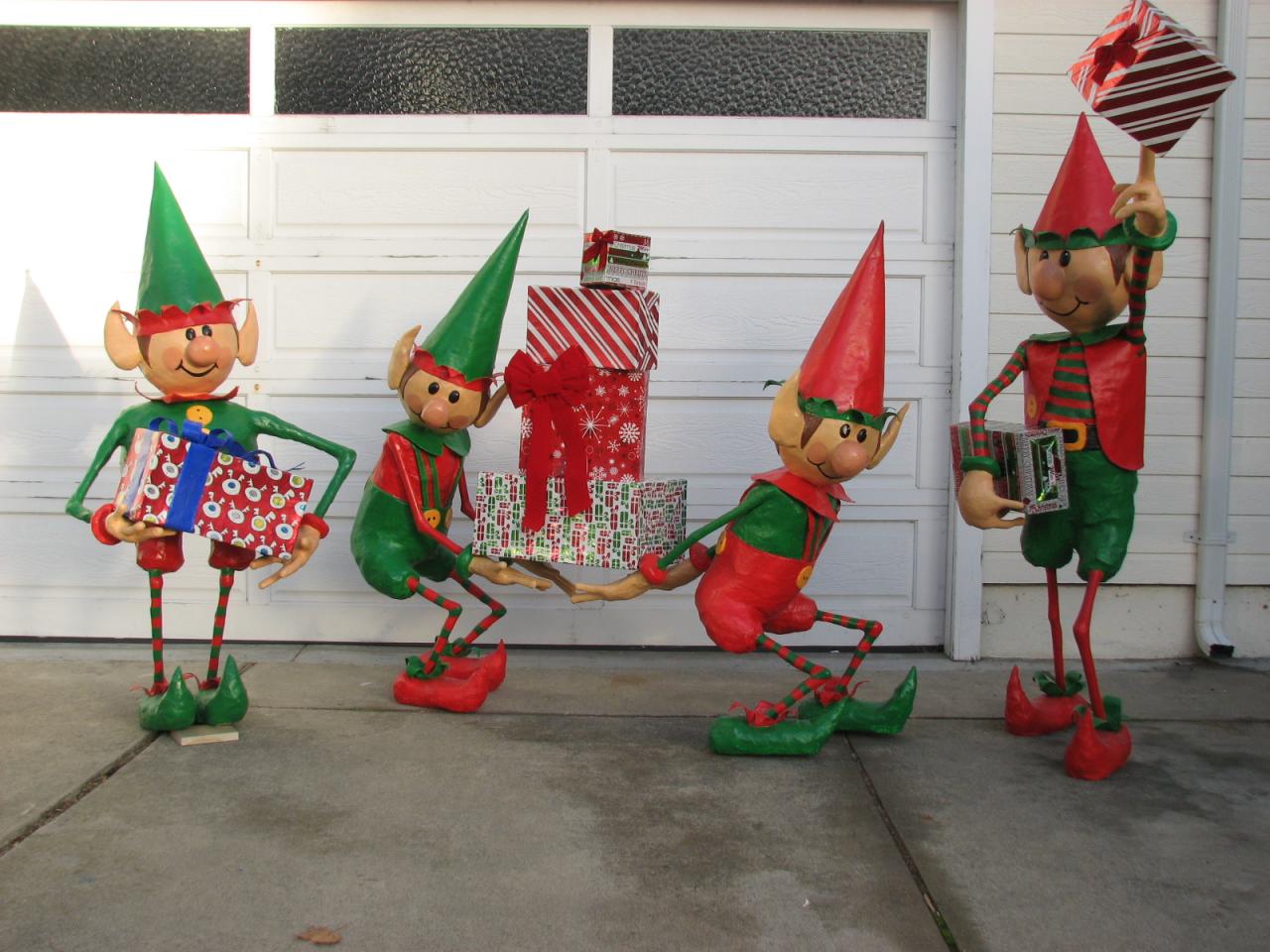
Preserving the charm and longevity of your elf decorations requires careful attention to cleaning and storage. Proper maintenance prevents damage, discoloration, and ensures your festive collection remains vibrant for years to come. This section Artikels best practices for cleaning various materials and safe storage techniques to protect your investment.
Cleaning Elf Decorations
Different elf decoration materials require specific cleaning methods. For example, delicate fabric elves should be handled with extra care, while sturdier plastic or wood elves can tolerate more robust cleaning. Using the appropriate cleaning method prevents damage and preserves the integrity of the decorations.
- Fabric Elves: Spot clean with a damp cloth and mild detergent. Avoid submerging in water, as this can cause shrinking or damage. Air dry completely before storing.
- Plastic Elves: Wipe clean with a damp cloth and mild soap. For stubborn stains, use a soft-bristled brush. Rinse thoroughly and allow to air dry.
- Wood Elves: Dust regularly with a soft cloth or feather duster. For more thorough cleaning, use a damp cloth and mild wood cleaner, ensuring the wood is completely dry before storage. Avoid harsh chemicals.
- Glass or Ceramic Elves: Hand wash gently with warm soapy water. Avoid abrasive cleaners or scouring pads. Dry thoroughly to prevent water spots.
Storing Elf Decorations
Proper storage is crucial for protecting your elf decorations from damage and deterioration. Using appropriate containers and protective materials prevents breakage, dust accumulation, and preserves the quality of the decorations over time.
Prior to storage, ensure all decorations are thoroughly clean and completely dry. This prevents mold and mildew growth. Fragile items should be individually wrapped in acid-free tissue paper to provide cushioning and prevent scratches.
Protective Materials and Containers for Long-Term Storage
Utilizing acid-free tissue paper, bubble wrap, or foam padding protects delicate decorations during storage. Storing decorations in airtight containers prevents dust and moisture damage. Clear plastic bins with lids are ideal for storing larger collections, allowing for easy identification of items. For particularly valuable or fragile pieces, consider using specialized archival storage boxes designed to protect against light and humidity.
These boxes are often lined with acid-free materials to prevent discoloration or deterioration. Labeling containers with the contents helps with organization and retrieval the following year. Consider storing the containers in a cool, dry, and dark place to further protect the decorations from environmental factors.
The History and Cultural Significance of Elf Decorations
Elf decorations, those whimsical and enchanting additions to our holiday displays, possess a surprisingly rich history intertwined with evolving cultural perceptions of elves themselves. Their journey from folklore to festive fixtures reflects changing societal views and the enduring appeal of magical creatures. Understanding this history provides a deeper appreciation for the symbolism and artistry behind these beloved ornaments.
The modern image of the elf, often associated with Christmas, is a relatively recent development. While mythical beings resembling elves have existed in various cultures for millennia, their association with Christmas celebrations is a more contemporary phenomenon. The transition from folklore figures to festive symbols involved a gradual shift in their portrayal, moving from potentially mischievous or even sinister creatures in older traditions to the cheerful, helpful helpers we know today.
Pre-Christian Representations of Elf-like Figures
Early depictions of elf-like beings, found in Norse and Germanic mythology, often portrayed them as possessing ambiguous natures. They were neither wholly good nor wholly evil, existing in a liminal space between the human and supernatural worlds. These figures, sometimes associated with nature spirits or guardians of the forest, lacked the consistently benevolent image we associate with Christmas elves.
Their presence in folklore influenced artistic representations, often depicting them with features reflecting their connection to nature—long pointed ears, flowing hair, and clothing made from natural materials. These early artistic portrayals serve as a stark contrast to the more standardized and commercially produced elf decorations prevalent today.
The Victorian Era and the Rise of the Modern Christmas Elf
The Victorian era (1837-1901) significantly impacted the development of the Christmas elf as we know it. The growing popularity of Christmas celebrations, coupled with a romanticized view of folklore, led to the creation of a more benign and child-friendly image of the elf. This shift is evident in the illustrations and literature of the time, which began depicting elves as cheerful helpers of Santa Claus, assisting in toy-making and delivering presents.
This shift from potentially ambivalent figures to cheerful helpers represents a crucial turning point in the evolution of elf decorations. The focus moved from the ambiguous nature of elves to their association with joy, wonder, and the magic of Christmas.
Twentieth and Twenty-First Century Elf Decoration Trends
The 20th and 21st centuries witnessed a mass production and standardization of elf decorations. The once unique and diverse representations of elf-like figures in folklore were replaced with more uniform designs, often reflecting contemporary aesthetics and trends. The introduction of mass-produced Christmas elves in the mid-20th century led to a significant increase in their availability and affordability, making them a common feature in homes across the globe.
The resulting standardization of the elf’s image, while contributing to its widespread popularity, also led to a certain loss of the nuanced and diverse portrayals found in earlier traditions. Modern elf decorations often reflect current popular culture trends, incorporating contemporary styles and designs, thereby continuing the evolution of their visual representation.
Cultural Variations in Elf Depictions and Decorations
While the modern Christmas elf enjoys widespread recognition, cultural variations in the depiction and use of elf-like figures persist. In some cultures, similar mythical beings continue to be associated with different festivals and traditions, reflecting unique regional beliefs and customs. These variations in beliefs and practices are reflected in the style and symbolism of the decorations associated with these figures.
The continued existence of diverse representations of elf-like figures highlights the enduring appeal of these magical creatures and their integration into various cultural narratives.
From whimsical woodland creatures to elegant, sophisticated designs, elf decorations offer a unique way to personalize your holiday celebrations. By understanding the various types, themes, and placement strategies, you can transform your space into a captivating winter wonderland. Whether you opt for store-bought charm or embrace the joy of DIY crafting, the magic of elf decorations lies in their ability to evoke a sense of wonder and joy, creating lasting memories for years to come.
Remember to properly maintain and store your cherished elf decorations to ensure they remain a part of your festive traditions for many seasons to follow.